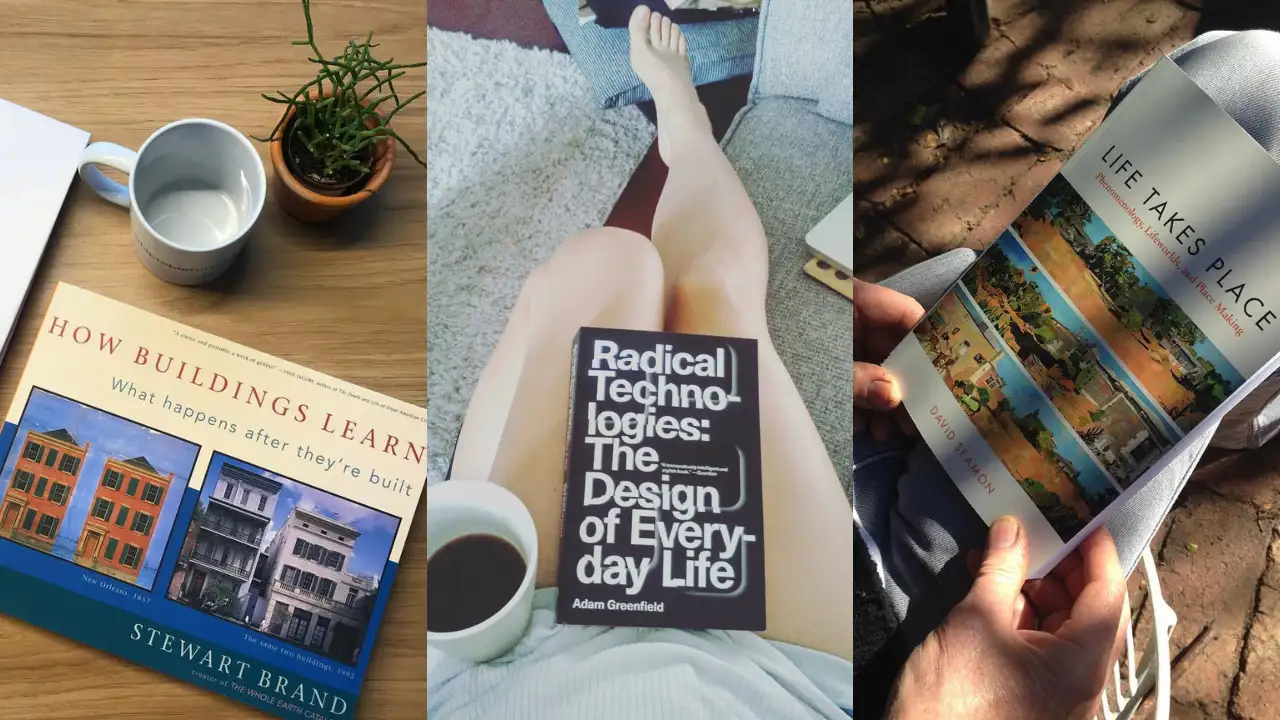Copyright timesnownews

We walk through our days surrounded by invisible frameworks that shape every decision, emotion, and interaction. The layout of your grocery store wasn't random. The way your social feed knows exactly what to show you follows hidden rules. Even the words you choose to describe your feelings come from structures built long before you were born. These ten books act as X-ray glasses for reality, revealing the secret blueprints behind what seems natural and obvious. They decode the unspoken algorithms of human behaviour, the silent architectures of power, and the buried patterns that make modern life tick. What appears simple on the surface often conceals the most intricate systems. These authors became cartographers of the unseen, mapping territories we inhabit without realising they exist.,Also Read: 10 Books That Reveal the Hidden Patterns Behind Everyday Life,1. The Design of Everyday Things by Donald A. Norman,,A cognitive scientist analyses why everyday objects often frustrate users, introducing design principles that make things intuitive, showing how good design makes complexity invisible while bad design reveals itself through user confusion. Donald Norman explains concepts including affordances, signifiers, feedback, and mental models, demonstrating how doors that push when they should pull or stoves with unclear controls create unnecessary difficulty. He argues that design should accommodate human psychology rather than demanding humans adapt to arbitrary systems, that errors usually reflect design failures rather than user stupidity, and that making invisible systems visible through appropriate feedback improves usability, fundamentally changing how designers and users understand the relationship between people and objects., ,2. Radical Technologies: The Design of Everyday Life by Adam Greenfield,An urbanist and designer examines how emerging technologies, including smartphones, Internet of Things, blockchain, automation, and artificial intelligence, are reshaping daily existence in ways most people barely notice. Adam Greenfield reveals how seemingly neutral technologies encode political choices, how smart city infrastructure enables surveillance and control, and how algorithms mediate access to jobs, credit, and information. He shows how technological systems designed for efficiency often reduce human autonomy, how data extraction has become ordinary, and how digital platforms restructure social relationships and urban space, making visible the invisible infrastructures now governing everyday life and arguing for democratic control over technological systems.,3. The Hidden Connections by Fritjof Capra,A physicist applies systems thinking and complexity theory to social phenomena, revealing hidden patterns in networks, organisations, and communities that conventional analysis misses. Fritjof Capra shows how living systems at all scales, from cells to societies, operate through similar principles, including networks, feedback loops, and emergence of properties unpredictable from components alone. He examines how understanding these patterns illuminates problems in business, education, and sustainability, arguing that mechanistic thinking fails to grasp interconnected reality. The book makes visible the invisible architecture of relationships, information flows, and self-organisation that shape social systems, suggesting that addressing complex problems requires understanding hidden connections rather than isolated parts.,4. Life Takes Place: Phenomenology, Lifeworlds, and Place-Making by David Seamon,A geographer uses phenomenological philosophy to examine how people experience and create places through their habitual movements, routines, and embodied relationships with environments. David Seamon explores concepts including place ballet, the choreography of everyday movements that create a sense of place, and environmental embodiment, the pre-reflective familiarity that makes places feel like home. He shows how places are not just physical settings but lived experiences created through routine interactions, how design can support or undermine place-making, and how understanding the invisible dimensions of place attachment matters for architecture and planning. The book reveals the phenomenological architecture underlying everyday spatial experience that usually remains unnoticed until disrupted.,5. The Practice of Everyday Life by Michel de Certeau,,A French theorist analyses how ordinary people creatively resist and subvert systems designed to control them through tactical improvisations within constraining structures. Michel de Certeau distinguishes strategies, the ways institutions and powerful actors organise space and impose order, from tactics, the ways ordinary people make do by poaching, bricolage, and creative reappropriation. He examines practices including walking through cities in ways that contradict planners' intentions, reading in ways authors didn't intend, and using products differently than marketers envisioned. The book reveals the invisible resistance embedded in everyday practices, showing consumption as production, obedience as containing subtle defiance, and ordinary people as active agents rather than passive subjects., ,6. Sociology: Exploring the Architecture of Everyday Life by David M. Newman & Jodi O'Brien,Sociologists present core sociological concepts through analysis of mundane daily activities, revealing how apparently natural routines actually reflect and reproduce social structures. David Newman and Jodi O'Brien show how choices about what to wear, eat, or buy are shaped by class, gender, race, and cultural norms rather than purely individual preferences. They examine how institutions, including family, education, and media, create social reality, how interaction rituals maintain social order, and how power operates through taken-for-granted practices. The book makes visible the invisible social architecture organising everyday life, showing that what feels natural is actually socially constructed, maintained through constant micro-level interactions that collectively produce macro-level structures.,7. How Buildings Learn: What Happens After They're Built by Stewart Brand,,A writer examines how buildings actually change over time through use, maintenance, and adaptation, challenging architecture's focus on initial design while ignoring buildings' lives after completion. Stewart Brand shows how buildings that work best accommodate change through flexible design, how most architectural acclaim goes to buildings photographed anew while ignoring whether they serve users over decades, and how different building layers, including structure, skin, and services, change at different rates. He argues that good design anticipates adaptation, that buildings should be easy to modify as needs change, and that understanding buildings as living systems rather than static objects improves both architecture and preservation, revealing the invisible temporal dimension of the built environment.,8. Finding Lost Space: Theories of Urban Design by Roger Trancik,,An urban designer analyses the spaces between buildings, showing how these often-neglected areas structure urban experience and proposing theories for creating coherent public space. Roger Trancik examines figure-ground relationships showing building patterns, linkage theory about movement and connection, and place theory about meaning and identity. He critiques modernist planning that created leftover spaces serving no one, arguing that good urban design requires understanding the void as actively shaped space rather than absence. The book makes visible the invisible architecture of the public realm, showing how streets, plazas, and in-between spaces create or destroy urban vitality, and provides frameworks for understanding and improving the spatial structure underlying everyday urban experience.,9. Design as Art by Bruno Munari,Italian designer and artist Bruno Munari redefines how we see everyday objects, showing that design is not merely aesthetic but a language of human communication. He writes with warmth, humour, and precision about how form meets function, how small details reflect social values, and how creativity bridges art and practicality. Like Alessi’s 'The Design Factory', it exposes the invisible thinking behind the objects that quietly shape our world., ,10. Learning the City: Translocal Assemblage and Urban Politics by Colin McFarlane,,A geographer examines how urban knowledge is produced, circulated, and applied across cities globally, revealing networks of expertise, policy models, and best practices that invisibly shape urban development worldwide. Colin McFarlane shows how ideas about what makes good cities travel between contexts through conferences, consulting, and international organisations, often ignoring local conditions. He explores how slum upgrading, smart city initiatives, and participatory planning models move globally while being adapted locally, and how this circulation of urban knowledge reflects and reproduces power relations. The book makes visible the invisible transnational architecture of urban policy-making, showing how everyday urban life is shaped by ideas and experts moving between cities in ways residents rarely perceive.,Also Read: 10 Books I Keep Returning To When the World Feels Too Heavy,Once you spot these invisible architectures, they appear everywhere. You notice persuasion tactics in every advertisement, power dynamics in casual conversations, and psychological patterns in your own thoughts. The grocery store becomes a laboratory of behavioural economics. Your morning routine reveals itself as a collection of designed habits. Social interactions expose their underlying game theories. This new vision doesn't make life colder or more mechanical. Instead, it offers something rare: genuine choice. When you understand the hidden systems shaping your decisions, you can choose whether to follow them or forge different paths. These ten books don't just explain how the world works behind the curtain. They hand you the tools to redesign your corner of it. The invisible remains invisible only until someone teaches you where to look.



